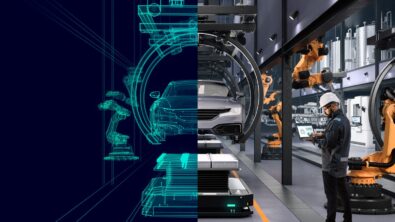5 Things You Didn’t Know About Electric Vehicles
Electric vehicles are getting cool. Thanks to Telsa brand and technology premiumization, and the anticipated Chevy Bolt range estimates, EVs are successfully image-shifting from the perceived quirky hippy option just above a bicycle on the automotive food chain, bypassing hipster-acceptable and moving towards mainstream-suburban-desirable.
Still we always hear about range anxiety, the usual challenge against getting us all into electric vehicles. The U.S. Department of Energy program EV Everywhere suggests that for mainstream acceptance, battery cost must come down by 75% while range doubles. The Musk-ism about towing a charging trailer for increased road trip range is a hilarious engineering solution just a little too much outside the box for my liking.
So, in order for you and I to hand over our cash for an EV, what are the engineering opportunities and solutions that would make that transaction more likely? How can we improve range by reducing weight, improving battery performance and lifetime, and simultaneously optimizing motor design for weight, efficiency and cost?
Here are 5 things to consider:
- Thermal management of battery and power electronics significantly improves battery performance and lifetime: battery performance can be improved by 20% with improved thermal efficiency, according to the National Renewable Energy Laboratory, and they also tell us if possible to see a two- to three-year increase in battery lifetime by reducing average operating temperature from 30 degrees Celsius to 20 degrees Celsius, or 86 degrees Fahrenheit to 68 degrees Fahrenheit. (This is why EV drivers are urged to park in the shade on hot days.) Computational Fluid Dynamics software tools such as FloEFD help in understanding thermal behavior through accurate modeling of individual cells, thus allowing the designer to capture individual temperature gradients across the cells and optimize thermal behavior.
- Power electronics need non-destructive testing and characterization for optimum lifetime reliability: typically power semiconductor devices like IGBTs are tested destructively and characterization data is then derived from those tests. This does not provide an accurate representation of expected lifetime and reliability, which is mandatory in the world of automotive zero-defect component lifetime targets. A solution such as Power Tester 1500A can test up to 128 IGBTs in parallel, and provide statistical failure data needed to accurately predict the field lifetime.
- Electric motor design needs simulation for optimum trade-off between performance, efficiency and cost: an electric vehicle has to have optimum motor design for a variety of drive cycles, dependent on factors such as traffic conditions, rolling resistance, slope angle and wind speed. Optimum energy and cost efficiency can only be achieved with modeling software such as System Vision. Here we can evaluate motor performance for a variety of drive cycles, understand the impact on motor behavior related to mechanical performance and efficiencies of the electric drive including energy losses, determine the physical motor dimensions and weight, and even evaluate materials based on performance optimization.
- Weight reduction (1): the wiring harness can be the heaviest component in an electric vehicle after the chassis. EVs can have multiple voltage domains — 12V, 48V and even 115V. These higher voltages require heavier shielded cabling, sending the lightweighting goal in the wrong direction. How can you architect an optimal electrical system with higher voltages, particularly when carmakers want to offer lots of options, which creates millions of possible permutations of the electrical system depending on options selected by the consumer? How to design an optimum system and understand the trade-offs to design the optimal set of architectures for the fleet? The Capital platform does that and more. Lots more, but this is looking at it in the context of EVs.
- Weight reduction (2): electric vehicles can have ~ 50lbs or more of sound insulation, and as there is no engine roar masking some of the ambient sound, the road noise becomes very apparent. But adding more layers of insulation, and more pounds of weight is not going to help us get to the magic 500-mile range on a single charge. One elegant solution is active noise cancellation (ANC) using electronics, the challenge being to cancel road noise which is an unpredictable noise source compared to, say the engine tone, which can be modeled and predicted more easily. Every pound of weight that gets offloaded gets the carmaker a little closer to selling an electric vehicle to you and me.
At Mentor Automotive we find our particular brand of system design innovation for automotive electronics to be in high demand by carmakers. As the automobile is increasingly digitalized, which brings innovation in the form of the connected, autonomous, electric vehicle, we do our bit providing innovation in system design. This helps our customers (17 of the world’s top 20 OEMs, and a host of suppliers as well) bring the cool new stuff to market faster.
Boosting efficiency and enabling optimal design decisions may just be the tipping point to make electric vehicle technology not just acceptable, but a better option compared to our beloved internal combustion machines.
For more information, check out this session on EV trends from our IESF event in Detroit earlier this year.


